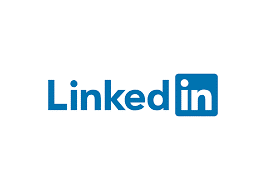LinkedIn and how to make the most out of it
Category: Tips and Advice
Publish date: 01/05/2020
 You’ve probably heard people recommending you get on LinkedIn, but don’t know where to begin or how to get the most out of it. This guide has been designed to get your started building your profile and networking.
You’ve probably heard people recommending you get on LinkedIn, but don’t know where to begin or how to get the most out of it. This guide has been designed to get your started building your profile and networking.
 What is LinkedIn?
What is LinkedIn?LinkedIn is a social media channel for professionals. A number of companies advertise jobs on the site and there are groups for those with shared interests. On an individual level it works like an Online CV, showcasing your experience, skills and talents, and in some cases you can use your LinkedIn profile to apply for jobs.
 So why use LinkedIn?
So why use LinkedIn?Remember that old phrase “it’s not what you know it’s who you know”? Well LinkedIn is a great research tool to find the people you want to talk to. Using LinkedIn well also allows recruiters to find you. A good profile will bring up jobs that match your interests, making job hunting that bit easier.
How do I start?
The first thing you need to do is build a profile. LinkedIn will give you advice as you do it but here are some tips specifically for those leaving the forces.
- Think about the types of jobs you are looking for and ensure your profile is geared towards them. You might have many skills but your profile will work best if you focus on a targeted range.
- Start with your tagline – when people search for you this is the first thing they see, so write a quick summary of what you want e.g. “Experienced project manager with a military background seeking new opportunities” is more relatable for civilians than seeing your military title.
- You will get more attention with a profile picture. Remember this is a professional site and your picture should reflect that.
- When you put job title, feel free to expand on the title. So you may put Warrant Officer, but HR Specialist gives extra a little more insight into your own specialist abilities.
- Most civilians won’t automatically know what your rank or service means, so be sure to include a description of your role in the forces beneath the job title.
- Avoid lots of jargon and acronyms.
Building your Network
Like any social media platform, LinkedIn works best when you actively grow your network with people with similar backgrounds and shared interests. When you have completed your profile you’ll be asked if you want to connect your email to the account, and it’ll show you if any of the contacts in your email are on the site. Here are some tips to help you master LinkedIn:
- Looking for friends and former colleagues is a good starting point.
- Connect with the CTP staff. We’ve got lots of external contacts and you’ll see who regularly comments on our posts.
- Join groups that align with your interests, some examples of ex-military ones are ‘UK Ex-Service’ or ‘No1 Ex-Military Recruitment’.
- Connect with other ex-military people in companies you’re interested in. To find them, type the company name in the search bar, click on to the company, then select view all employees on LinkedIn. This will bring a list up which you can filter. When you select the filter there is an option to search previous company – look for British Army, Royal Navy, Royal Air Force or HM Forces to find people who might be willing to give you some inside advice
- Also use the above method to find people in the same field as you in companies you are interested in.
- Look for recruiters at those companies and connect with them too.
Some advice about etiquette: it is polite to include a message about why you are looking to connect with that person if you don’t know them.
 Getting Noticed
Getting NoticedSo you’re profile looks great and you’re building your network, but you’re still not getting the results you hoped for. You can gain more attention by being active on Linked In:
- Comment on posts that you are interested in - offer a different point of view and add something to the discussion.
- Share articles you’ve found or write your own posts.
- When recruiters post about jobs, use the chance to get involved. Comment asking a question about the job or if you can have a chat about it. Asking a recruiter to look at your profile with no other information is considered to be a lazy approach.
- If you’re feeling really adventurous you can write articles and share them on LinkedIn.
 Summary
SummaryUsing the advice and guidance above will help you get started, but the important thing to remember is that LinkedIn is a professional platform to help you sell your talents and abilities. It is a branding tool for you to use and highlight your unique qualities. If you find any of the above difficult, remember CTP staff are there to help, so get in touch for a review.